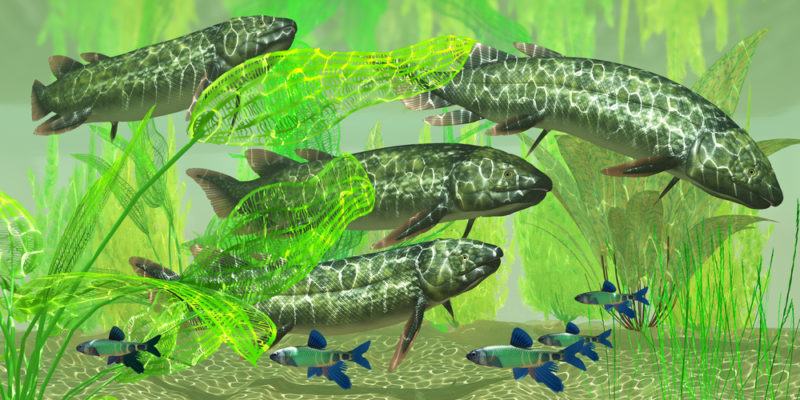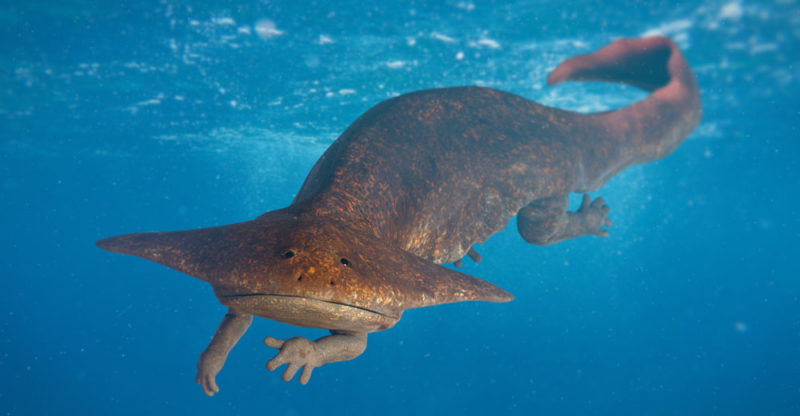We explain what the Carboniferous Period was, how it is divided and the climate it presents. Also, what are its characteristics, flora and fauna.
What was the Carboniferous Period?
The Carboniferous Period or simply Carboniferous is known as the penultimate rung of the Paleozoic Era (beginning approximately 542 million years ago and ending approximately 298 million years ago) on the geological time scale. In other words, it is the fifth period of the Paleozoic Era , preceded by the Devonian and succeeded by the Permian .
The Carboniferous begins about 359 million years ago and ends approximately 299 million years ago. It is the longest period of the Paleozoic Era and one of the most tectonically active in Earth 's geological history .
Its name, which comes from the Latin words carb? (“coal”) and fer? (“carrier”), was given by the British geologists William Conybeare and William Phillips in 1822. It is due to the fact that an enormous amount of coal was produced in this period ore in the world.
Previous period
The Devonian Period begins about 416 million years ago and is the fourth of the Paleozoic Era.
It is a time of great diversification of animal life .
The first amphibians arose , equipped with non-branchial respiration systems to colonize dry land, possibly due to the pressure of a declining water level.
Furthermore, the land had already been populated by arthropods , so there was a food niche to exploit.
In the sea , on the other hand, the fish multiplied and diversified. Sponges, nautiloids and ammonoids appeared, as well as primitive sharks. At the end of this period there was a mass extinction that severely affected marine life.
Carboniferous Period Division

The Carboniferous is divided in two different ways: the North American and the European , the first being the one that enjoys the greatest international acceptance. Let's see them both separately:
- North American classification. According to this, the Carboniferous is divided into two Sub-periods or Systems, each contemplating three Epochs or Series and encompassing between them seven Ages or Floors, as follows:
- Mississippian Sub-period. It begins 358.9 million years ago and ends approximately 330.9 million years ago, dividing into: Lower or Early Mississippian, equivalent to the Tournaisian Age; Middle Mississippian, equivalent to the Viseian Age; and Late or Upper Mississippian, equivalent to the Sepukhovian Age.
- Pennsylvanian Sub-period. It begins 323.4 million years ago and ends about 303.7 million years ago, dividing into: Lower or Early Pennsylvanian, equivalent to the Bashkirian Age; Middle Pennsylvanian, equivalent to Moscovian Age; and Upper or Late Pennsylvanian, further divided into two Ages: Kasimovian and Gzhelian.
- European classification. The European classification divides the Carboniferous into two Series or Epochs, which encompass five Floors or Ages, as follows:
- Dinantian period. It begins approximately 359.2 million years ago and covers two Ages: the Tournaisian and the Viseian.
- Silesian period. It begins 326.4 million years ago and covers three Ages: the Namurian, the Westphalian and the Stephanian.
Geological characteristics of the Carboniferous

If the end of the Devonian Period was characterized by a general drop in seawater levels , in the Carboniferous this proportion was reversed. New seas were created within the continents and the global temperature changed .
The continents assembled into the supercontinent of Pangaea , pressing on each other and giving rise to a very active formation of mountains . Pangea in this period is shaped like an "O" and is surrounded by two oceans : Panthalassa, the global ocean, and Paleo-Tethys, the ocean inside Pangea.
Climatic characteristics of the Carboniferous
The Carboniferous climate is divided into two trends:
- A warmer and more humid first trend. That facilitated the expansion of forests and jungles.
- A second colder and drier. As Gondwana, the southern portion of Pangea was covered with glaciers that lasted until the Permian Period.
Characteristics of the Carboniferous flora
 In no other geological period was there such a proliferation of plants as in the Carboniferous. The fossilization of plants is, in fact, the explanation for their name.
In no other geological period was there such a proliferation of plants as in the Carboniferous. The fossilization of plants is, in fact, the explanation for their name.The Devonian flora grew during the lower stage and greatly proliferated in later ones, achieving great evolutionary success with a limited number of genera , but great diversity of species.
Among them, large, tree-bearing, seed-bearing ferns , tall gymnosperm trees, and other species thrived and lasted until the Permian, when the increase in fauna made it possible to control the expansion of the flora.
Fungi also diversified greatly during the Carboniferous, as there weren't too many animals to devour them.
The great deposits of coal
 The Carboniferous left a legacy of repeating geological sequences , composed of limestone, sandstone, slate, and coal deposits, in that order, known as "cyclothems" in the United States and "Coal Measures" in Britain.
The Carboniferous left a legacy of repeating geological sequences , composed of limestone, sandstone, slate, and coal deposits, in that order, known as "cyclothems" in the United States and "Coal Measures" in Britain.They are large coal deposits that were exploited by humans during the Industrial Revolution and constituted the first fossil fuels.
The accumulation of these carbon substrates is due to several factors. Mainly, the Carboniferous type of bark of trees was rich in lignin fiber . This compound could not yet be decomposed by bacteria and fungi, which left a large number of trunks exposed to the elements.
Characteristics of the Carboniferous fauna
 The Carboniferous fauna is particularly varied. The seas teemed with invertebrate animals such as echinoderms, brachiopods, sponges and trilobites. Calcareous algae were particularly important in the formation of barrier reefs, since corals had not yet evolved.
The Carboniferous fauna is particularly varied. The seas teemed with invertebrate animals such as echinoderms, brachiopods, sponges and trilobites. Calcareous algae were particularly important in the formation of barrier reefs, since corals had not yet evolved.Large predators were fish , chondrichthyans (sharks and their relatives), and also early amphibians, many of which still retained fish-like features, but were capable of breathing out of water.
Hyper-oxygenation of the atmosphere
During the Carboniferous there was a gigantic expansion of plant life , due to the warm climate and high humidity levels. Its consequences include a notorious increase in oxygen in the atmosphere , whose percentage of this gas reached 35% (compared to the current 21%).The abundance of oxygen allowed the proliferation of animal life , especially arthropods, whose respiratory system depends directly on the abundance of oxygen around them.
Thus, they were able to grow to levels that would be gigantic today . Fossils of dragonflies as large as a modern seagull, for example, or scorpions up to a meter long have been found .
Middle Carboniferous mass extinction
 In the middle of the Carboniferous period there was a mass extinction of species. It was possibly due to climate change as a result of the expansion of the glaciers in Gondwana, which dried up the level of the seas and lowered the global temperature .
In the middle of the Carboniferous period there was a mass extinction of species. It was possibly due to climate change as a result of the expansion of the glaciers in Gondwana, which dried up the level of the seas and lowered the global temperature .
Later period: the Permian
The Permian is the last period of the Paleozoic Era and is temporarily located from about 299 to about 251 million years ago. At this time the world consisted of two large continents, Siberia and Pangea, surrounded by a global ocean called Panthalassa.The first diversification of living beings into four ancestral groups took place there . Thus mammals , turtles , lepidosaurs and archosaurs were differentiated.
The Permian culminated in the largest known extinction in the history of life on the planet , the Permian-Triassic mass extinction, which wiped out 70% of terrestrial species and 90% of marine species.
The above publication at Collaborative Research Group is for informational and educational purposes only and has been developed by referring reliable sources and recommendations from technology experts. We do not have any contact with official entities nor do we intend to replace the information that they emit.
Luke is passionate about fostering student involvement and connection. He studied psychology for his major and likes learning about the past. Luke aims to specialize in artificial intelligence and cybersecurity. .
Leave a reply
Your email address will not be published. Required fields are marked *Recent post

Sport: What Is It, Types, Risks, Features, Characteristics and Examples

Dogs: Emergence, Features, Characteristics, Feeding and Breeds

Story: Definition, Elements, Structure, Features and Characteristics

